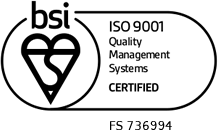Multifunctional stress rig
In situ Multifunctional materials characterisation
Introducing our new stress rig in situ operando multifunctional materials tester

Electrosciences have developed a new multipurpose and multifunctional stress-strain rig. This tool was co-developed with our collaboration partners the University of Liverpool and the XMaS beamline at the ESRF (European Synchrotron Radiation Facility), with early research support from the European Commission and the Office of Naval Research Global.
Novel piezoelectric single crystal materials may now be routinely characterised with regards to their electromechanical properties, but two new features developed allow the user to probe optical transmission alongside the simultaneous measurement of strain, load, electrical polarisation, charge and voltages, whilst the sample is compressively stressed, electrically excited and all at different set temperatures!
The tool has already been extremely useful to the sonar and medical devices communities within collaborative research programmes and in collaboration with our partner aixACCT, we are launching the commercial sale of the tool in late 2022.
Our new Multifunctional stress rig allows users to characterise their new materials electromechanical response to stress, field, load, and temperature. The sample is loaded so that its surface may be readily scanned by an x-ray beam without any possibility of the beam intersecting any parts of the rig at angles right down to near coincdience (a direction that is parallel to the sample surface)!
The device will support materials innovation by delivering new, cost effective measurement data that is recorded as a function of multiple excitations, including in situ electric field, in situ stress, temperature, or optical transmission.
Fast, accurate determination of the in situ properties of electroceramics including single crystals used in sonar and medical ultrasound devices. Here, we observe crystallographic changes in a piezoelectric single crystal sonar material, measured in 3D space as a function of applied mechanical stress. All measured using our ESPYRIG stress cell.

Who will benefit from this technology?
From global manufacturers of piezoelectric single crystals and innovators in sonar, energy harvesting, smart actuation, hydrophone and medical ultrasound to the R&D community, a rapid and accurate evaluation of piezoelectric material’s functional properties is required. However, these materials parameters are often dependent on applied stress, field, temperature and so on. With our new tool, these parameters may be simultaneously recorded and time-stamped to the driving field (voltage, stress, temperature, optics) to realise a complete in situ and in operando measurement system.
Our new tool helps companies bring to market new products that integrate functional single crystal transducers or other multifunctional materials shortening the time taken between materials science & prototype development.
The benefits






